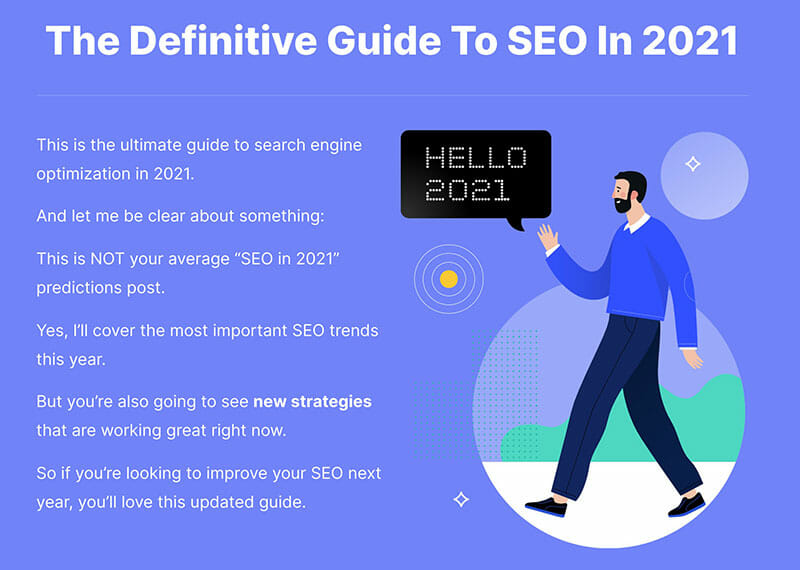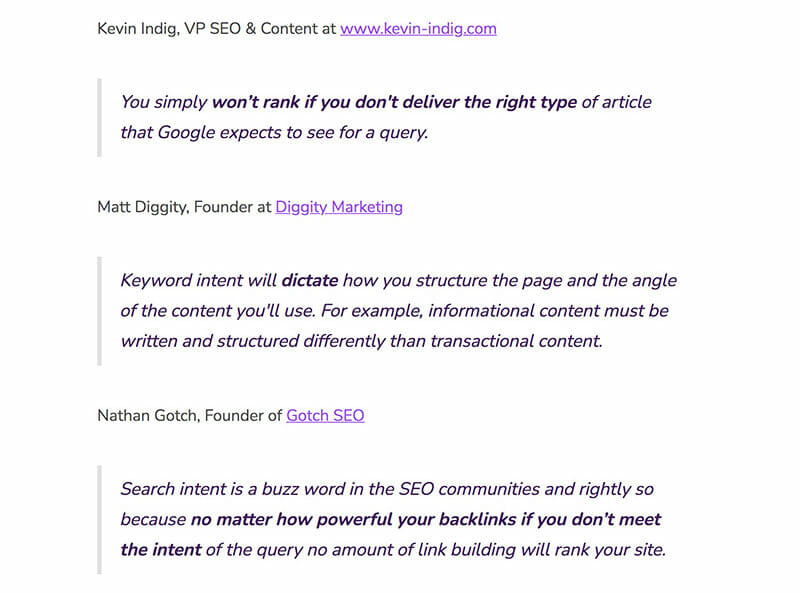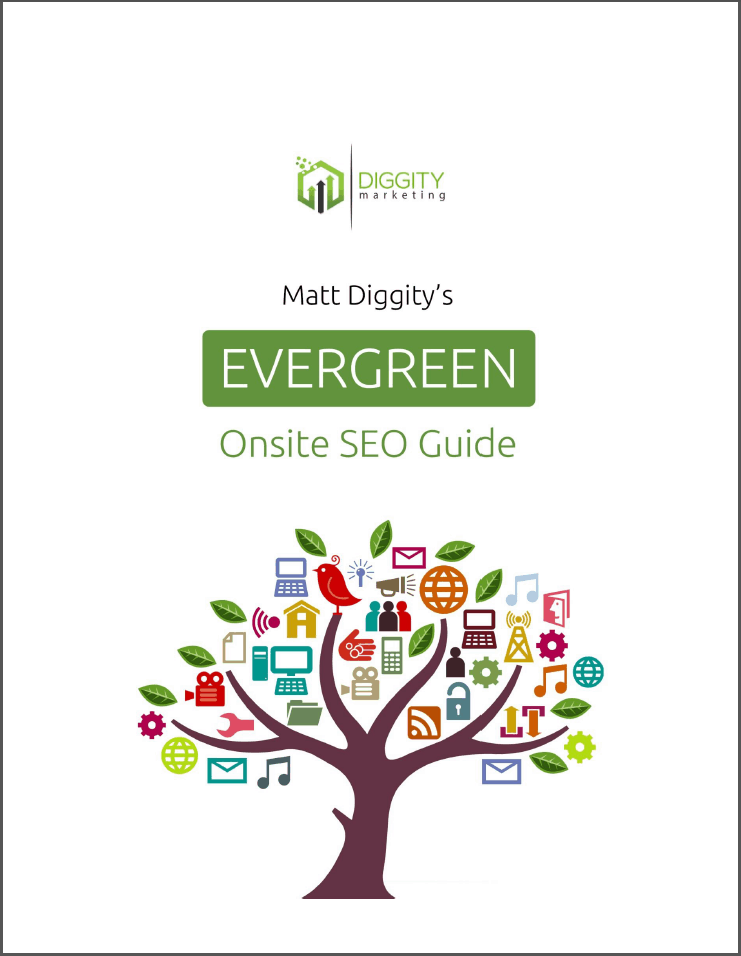Are you looking to hit the ground running coming into the new year? You can, thanks to a fantastic SEO community that closed out the last year with some of their best work.
First up, some epic guides. They’ll teach you how to build links to the right pages, the best SEO practices in 2021, and how to use trend analysis to understand your audience.
Then, we’ve got three thick case studies. You’ll learn what an in-depth analysis can tell us about how search intent evolved in 2020 and the December core update. You’ll then see a breakdown of the sites that were the biggest winners and losers of the last core update.
We’ll close with the month’s news. You’ll get the latest on the second wave of the core update (and whether it’s finally over).
The SEOs Guide To Building Links To The Right Pages
We all agree that you should build backlinks, but it’s harder to find advice on what pages need backlinks the most. That’s a gap I’ve tried to fill with this guide on carefully choosing the pages that should receive links.
In this piece, I try to answer the questions: What kind of content should you link to? Does the skyscraper outreach technique work? Should you build links to your home page?
Let’s start with the first one. When deciding what content you should link to, you should consider two important categories—information and commercial. Most SEOs believe you should only build links to informational content. I disagree.
I think there are some interesting potential positive effects in building links to commercial content. If you link directly to a page, that page gets 100% of the link juice. It’s not diluted as it goes through the tiered links. Don’t you want your commercial pages to have that power?
Next, let’s re-examine the argument behind the Skyscraper technique. This technique depends on your creating a massive piece of content that can attract links. Then, you put internal links throughout the content so the link juice will spread around your site. Again, does it work?
I tested this theory myself.
It takes a long time (2 months or more) to pass link juice from informational content to a commercial page.
The effect of the links is too muted. The link equity is diluted as it is filtered through another page.
If you want a page to rank and rank within a reasonable amount of time, you need to build links directly to it.
A typical site has 40-60% of its backlinks pointing to its home page. An easy way to keep the ratio balanced is to send citations to your home page. Sign up for business directory or industry listing sites to make it easy.
Backlinks are an essential part of SEO, but the next guide claims to cover the entire topic. Let’s look at Backlinko’s guide to SEO in 2021.
The Definitive Guide To SEO In 2021
https://backlinko.com/seo-this-year
Backlinko brings us this massive guide into all the factors that will be defining SEO in 2021. Is it genuinely definitive? That’s for you to decide, but no one can argue that Backlinko isn’t giving it all their effort.

In a series of chunky chapters, they cover many of the most important topics in SEO. In them, they provide their personal advice for handing topics like:
 Applying core web vitals
Applying core web vitals Optimizing for featured snippets
Optimizing for featured snippets The rise of visual search
The rise of visual search The changes brought about by domain authority 2.0
The changes brought about by domain authority 2.0 How to master search intent
How to master search intent
Each chapter is laid out with a significant amount of detail, including steps and visual aids.

The chapters are followed by a “quick tips” section that they use to break down some of the practices they believe are going to be most effective in 2021:
Publish “Research Content”: Data attracts backlinks from big journalism and industry sites.
Create Visual Content (Especially “Concept Visuals”): Create visuals that are easy for other sites to embed, and you can collect a lot more backlinks.
Optimize Your Podcast Show Notes for SEO: Most people haven’t tried ranking in Google with their show notes. You can get ahead of them by building out thoughtful and well-cited show notes.
Build Backlinks as a Podcast Guest: You can score a great backlink just by giving a few minutes of your time to discuss a topic you already enjoy.
Publish Content Hubs: This article is an example of this tip in action. Big hubs are competitive content.
We’ll likely see this guide continue to evolve as the year moves on. For the next guide, let’s focus on what it is that our audience wants. This guide will teach us how to analyze trends.
Trend Analysis: How to Understand Your Audience’s Search Behavior
https://www.searchenginejournal.com/trend-analysis-audience-search-behaviors/390673/
Kacie Gaudiose brings us this guide to understanding disruptions in user search behavior. As she points out, trend analysis has always been an essential part of marketing. Now, we have some new tools to shed light on how users are behaving.
She recommends a stripped-down process that only requires your insight and some free tools. You’ll need a tool to see search volume data.

As an example, she breaks down the difference between pre-quarantine and quarantine search interest. She explains how audiences search patterns have changed (and affected):
Quarantine (all industries)
Travel restrictions (travel industries)
Financial relief efforts (finance, wealth management, & insurance industries)
Stay-at-home order restrictions gradually lift (regional impacts on all industries)
Phase two on the horizon (all industries)
Using quarantine as an example and Google Trends as her tool, she shows how significantly searches have changed. “Video games” proved to be a noteworthy sample.
“Video games” as a term experienced a significant peak at the start of quarantine. It experienced its biggest search peak in 5 years. “Video game consoles” also rode this wave.

Lounge clothes, baking, outdoor living, and other niches also experienced these changes. Kacie has some ideas on how we can turn those insights into actionable strategies.
First, she recommends using the “Related Queries” feature in Google Trends to get a more detailed look at what’s driving search trends. For video games, a significant number of new searches were driven by phrases like:
Games to play with friends over video call
Games to play over video chat
This tells us that people aren’t just looking for video games. They’re looking for ways to connect with friends or family. That’s information that we can use to develop targeted content for the keywords. Now we can easily build content, metadata, and internal linking.
Now, we’re ready to talk about the month’s case studies. It starts with a massive research project on search analysis.
The Great Search Intent Analysis of 2020: Top SEOs on User Intent + Big Data Case Study on Intent Changes
https://surferseo.com/blog/search-intent-case-study/
Michał Suski of Surfer SEO brings us this seriously in-depth look into how the most prominent SEOs meet the demands of user intent and follow up with a significant data study.
He starts with a bold declaration: That user intent is becoming the foundation of content optimization—even equal to backlinks, technical SEO, and content in the page evaluation process. All of the SEOs he asked agreed with him.

So he polled a ton of SEO experts such as Matthew Woodward, Gael Breton, Robbie Richards, Viola Eva, and myself to find out whether there was a consensus answer to the following questions:
Question 1: Why is the user intent essential to analyze?
Question 2: How to determine user intent?
In answer to the first question, the SEOs all agreed that they considered understanding user intent to be a core practice. Some, like Kevin Indig, argued that user intent was so crucial that no other ranking factor applies if you can’t properly analyze it.
The second question involved more varied answers. The SEOs suggested such varied tactics as analyzing the whole of page 1 or looking at the SERP features for closely-related keywords.

The case study may provide more insight. The Surfer team looked at how search intent has changed over time by crawling 37,000 keywords in Sept 2017. They were recrawled after the BERT update, May Core Update, and then the December Core Update.
The team noted that there were significant changes to the intent of the keywords after each major update. Many keywords were reverted or reset between the updates, but 15% of all keywords changed cumulatively.
This tells us something about the direction core updates are heading. In the next item, we’ll dive deep into the most recent one.
December Core Update Analysis: Sorry Google, You Have a Spam Problem [Opinion]
https://www.seobility.net/en/blog/december-core-update-analysis/
David McSweeney of Seobility brings us this breakdown of the December update and some issues with it that SEOs shouldn’t miss.
First, it was big. As he notes in an early graph, SEMrush detected that nearly 10% of searches experienced some changes. For some sites, these changes meant the loss of 50%+ of their traffic.

David tried to answer two questions with his analysis:
 What is Google trying to achieve with their Core updates?
What is Google trying to achieve with their Core updates? And are they succeeding?
And are they succeeding?
He theorized that this update was another attempt at enforcing the E-A-T standards that were recently introduced. As he points out, though, it’s not hard to find searches where these standards aren’t being met.
He tagged me in for part of the analysis. I submitted some stats for a health site that has been well-rewarded by the update. This example site isn’t currently applying any E-A-T principles. It’s a repurposed site that’s getting by almost entirely on links.
As further evidence, he investigated some claims made on Barry Schwartz’s site about SEOs who were having trouble beating cloaked redirects. Sure enough, keywords like “Free Classifieds” are returning explicit adult results.

David seems to feel that the update mostly missed the mark, but he had some closing advice for SEOs who got hit.
For the time being, his advice is to keep working on satisfying user intent, developing E-A-T signals, and earning good backlinks. Google may be struggling to identify these sites right now, but they are putting a massive amount of effort into figuring it out.
For our next case study, let’s take a more in-depth look at who lost and won.
1,000+ Winners and Losers of the December 2020 Google Core Algorithm Update
Writing for PathInteractive, Lily Ray brings us this look at the biggest winners and losers of the last core update.
For the data, she used Sistrix’s Visibility Index. On its own, this is not an SEO traffic index, but it does reflect how visible a domain is against 1 million different keywords.

Lily’s analysis looked at the changes for 1000+ sites from across 38 different categories such as Accounting & Taxes, Health, Nutrition & Fitness, and Travel & Tourism.
From there, she organized the winning categories and losing categories based on how much visibility they gained or lost.
Arts & Entertainment
Relocation & Moving
Finance
Science & Education
Accounting & Taxes
Natural & Alternative Medicine
Addictions
Senior Care
Dating
Sports
She performed the same measurements for the winning and losing domains.
Movinghelp.com (1564.04% change in visibility!)
darebee.com
mihoyo.com
alllaw.com
howard.edu
amazon.com
overstock.com
cdc.gov
pinterest.com
tripadvisor.com
She followed up the data with some speculation on what might account for the changes.
Is Google giving smaller players a leg up against the most insurmountable heavyweights? Are they taking away bonuses they gave sites that provided credible pandemic news?
Time will tell. There will be a lot more data on the core update soon. For now, let’s jump into this month’s guides. We’ll start with my’ guide to building links to the right pages.
That’s all for the data studies. Let’s review the month’s news and what we learned about the rollout of the core update.
Google December 2020 Core Update Second Wave
https://www.seroundtable.com/second-wave-google-december-2020-core-update-30585.html
Barry Schwartz brings us this breakdown of the Core Update rollout and whether we’re finally done.
First, he covers the evidence that we weren’t dealing with a typical rollout. While many of them take place over two weeks, the major effects of this one broke across 48 hours of significant volatility.

That was not the end of it, though. Several days later, on December 10th, we saw a second spike. This one was a lot more subtle than the last one, but not for everyone. Barry documented reactions across the web where people saw their traffic drop by as much as 25%.
Some people were lucky enough to see their traffic recover in the second wave. This suggests that the second wave may have included some corrective measures.
So are we done? According to Google, yes. The confirmation was published on December 16th. An unusual amount of time passed between the last update and this one, so it’s hard to predict when we’ll see this amount of volatility again.
That may be all the news there is on this issue until then. If something breaks, we’ll bring it to you here.
Got Questions or Comments?
Join the discussion here on Facebook.




